Proc. of Second World Avocado Congress 1992 pp. 551-558
Study of Avocado Germplasm Resources, 1988 -1990. IV. Findings in the Mexican Gulf Region
Alejandro F.
Barrientos-Priego and Michal W. Borys
Departamento de Fitotecnia,
Universidad Autonoma Chapingo. Chapingo 56230, Edo. de Mexico, Mexico
Esteban
Escamilla-Prado
Centre Regional Universitario
Oriente, Universidad Autonoma Chapingo. Huatusco 94100, Veracruz, Mexico
Avraham D.
Ben-Ya'acov
Agricultural Research
Organization. The Volcani Center. P.O. Box 6, Bet Dagan 50250, Israel
Eulogio de
la Cruz-Torres and Luis Lopez-Lopez
Centro de Investigaciones
Cientificas Tecnologicas del Aguacate en el Estado de Mexico (CICTAMEX),
Palacio Municipal, Coatepec Harinas 51700, Edo. de Mexico, Mexico
Abstract. Explorations were carried out in the States of Veracruz, Yucatan,
Tamaulipas, and northern Puebla and Chiapas. These states are rich in avocado
germplasm resources and in some other species of Persea. In Tantima,
Veracruz, we collected material from a very old West Indian race tree that
seemed to be in native condition growing among Persea schiedeana. At
Cuetzalan in the northern part of the state of Puebla (very near the state of
Veracruz), a large number of Beilschmiedias were collected; this genus
is related to avocado. Trees of Persea schiedeana were found at 1820 m
elevation near Chalam, Chiapas. The natives call it "hib" and the
trees look different from Persea schiedeana ("chinini") of the
low land. In the same state, Persea vesticula was collected in Tenejapa
and a large population of Persea steyermarkii was found near Tzontehuitz
at an elevation of 2700 m. Persea nubigena was located near Motozintla,
Chiapas, growing with two other species of Persea. The material
collected was deposited in CICTAMEX in the State of Mexico and Centro Regional
Universitario Oriente, Universidad Autonoma Chapingo at Huatusco, Veracruz.
The genetic resources of avocado are very important for breeding programs of new rootstocks and cultivars, so it is urgent to rescue many types of avocados and related species from the rapid devastation of the forests and jungles. In Ecuador, Persea theobromifolia has been reported as almost extinct (Gentry, 1979). In the case of Mexico, e.g., in Veracruz, the introduction of cattle in many areas has resulted in the establishment of grass fields eliminating the forests and jungles. The same has happened with the establishment of crops like maize. Another factor is fire that has brought great devastation. All of these result in what is known as germplasm erosion.
The aim of this work is to contribute to the exploration, collection and conservation of the germplasm of the avocado and related species.
Materials and Methods
In the first phases of this research a review of literature was done, e.g. Kopp (1966), Griswold (1946), Popenoe (1935), Williams (1977), Schroeder (1948), Allen (1945), Zentmyer (1953), Zentmyer and Schieber (1987), Ruiz (1912), and others. Personal contacts were made as well, such as with the late Prof. Efraim Hernandez Xolocotzi, a well-known botanist. Climatic data from the planned exploration sites were also compiled.
The exploration work was in the States of Veracruz, Yucatan, Tamaulipas, northern Puebla and Chiapas. In many cases we had help from agronomists, botanists and village people to locate the trees of avocado and related species. The collection of vegetative material was based mainly on budwood, but in the case of species related to avocado, seeds or seedlings were taken also. All the collected materials were taken to the nursery in order to graft and establish the seeds or seedlings. Later, when the plants reached a good size, they were planted in one of the three germplasm banks maintained by CICTAMEX, located at Coatepec Harinas and Ixtapan de la Sal both in the State of Mexico and another at Huatusco, Veracruz maintained by Centro Regional Universitario Oriente of the Universidad Autonoma Chapingo.
Also, herbarium specimens were taken of some of the collections. The identification of the related species of avocado was based on Kopp (1966).
Results and Discussion
In the state of Veracruz, collections were made at the Sierra de Tan-tima near Tepetzintla. At an elevation of 420 m, we located a very old tree of Persea americana var. americana growing in an undisturbed tropical jungle among trees of Persea schiedeana. This accession seems to be in a wild state, but we do not have evidence to confirm this. At the same place at an elevation of 800 m, we located a Mexican-type avocado that is in a wild forest condition.
At Aquila, Veracruz, we collected material from very old trees of the Mexican race. Most of the trees are in a cultivated field, but some were growing close to the forest. The elevation is 1750 m.
Near Cd. Victoria, Tamaulipas, West Indian avocados were collected. Some seem to be hybrids with Mexican race avocados. These collections produce fruit of good quality which can be harvested in July.
In the state of Yucatan at elevations from 0 to 50 m, we collected material of the West Indian race. This region has very calcareous, shallow and rocky soils so we looked for trees growing under these conditions which exhibited no symptoms of chlorosis or lack of vigor. We identified 10 trees with excellent health. These accessions should be tested as rootstocks tolerant to chlorosis. In the same region, we found two trees that produce fruit which could be harvested two times a year, once in February and again in July. All of these materials were found in backyards and small orchards.
In the northern area of Puebla, close to Veracruz, we made collections of Beilschmiedia, a genus related to avocado, termed locally "nayo". Four types have been located; two with green fruits probably Beilschmiedia anay (Fig. 1a) and two with black fruit probably Beilschmiedia mexicana (Fig. 1b). The accessions were found under natural conditions located inside coffee orchards at elevations under 1000 m. Experiments have been carried out at the Centro Regional Universitario Oriente of the Universidad Autonoma Chapingo to investigate the possibility of graft compatibility between Beilschmiedia and Persea.
The state most explored by us is Chiapas, which has
vast genetic resources of avocado and related species. Between Tuxtla Gutierrez
and San Cristobal de las Casas, we collected material from trees of P.
americana var. guatemalensis growing on the slope of a hill under
severe drought conditions (Fig. 2). Market collections were made at San
Cristobal de las Casas of Guatemalan race "criollos". Fruit shape
varied from obovoid to oblate types and thickness of fruit skin from 0.1 to 0.4
cm. Near Chalam at an elevation of 1820 m, we located a Guatemalan race avocado
with approximately 3000 fruits per tree and 10 m in height.
Very close to this tree was found an old tree of P. schiedeana that the people call "hib" (Fig. 3a). It has different characteristics of leaves (Fig. 3b) and fruit (Fig. 3c) than the lowland "chinini" (Fig. 3d). Probably there are races within P. schiedeana that have not previously been established.
Near Tenejapa (elevation of 1800 m) were trees of P. vesticula. This species is well-distributed due to the transport of the seeds by small animals and is called "aguacate de ardilla" (squirrel avocado). Another Persea called "chijte" was growing among P. vesticula trees, but taxonomic identification was not possible due to the lack of flowers. These two species were growing wild in the forest.
Near Tzontehuitz, Chiapas, a very large population of Persea steyermarkii was located in a cloud forest at an elevation of 2,700 m (Fig. 4). In this forest, it is the dominant species, some trees reaching an approximate height of 60 m. This species can be distinguished by the rapid formation of corky tissue on the young stems and the acute angle of the venation of the leaf. At 2,800 m elevation in a cloud forest near Motozintla, Chiapas, we found Persea nubigena and two other species, one of them of the subgenus Eriodaphne and the other one not identified because of the absence of flowers.
Some of the forests containing Persea steyermarkii and Persea vesticula are being cut down and are in danger of disappearing. It is urgent to conserve this and other material for future use before it is lost forever.
We appreciate the financial support provided by the German-Israel Agricultural Research Agreement {GIARA 1-15 (88-4)}.
Literature Cited
Allen, C.K. 1945. Studies in the Lauraceae VI. Preliminary survey of the Mexican and Central American species. J. Arnold Arb. 26: 282-434.
Gentry, A.M. 1979. Extinction and conservation of plant species in tropical America: phytogeographical perspective. In: Systematic Botany, Plant Utilization and Plant Utilization and Biosphere Conservation. I. Hedberg (ed.). Almquist and Wiksell, Stockholm.
Griswold, H.B. 1946. Primitive avocados of centroamerica and Mexico. Calif. Avocado Soc. Yrbk. 30:103-105.
Kopp, L.E. 1966. A taxonomic revision of the genus Persea in the western hemisphere (Persea-Lauraceae). Mem. New York Botanical Garden 14:1-117.
Popenoe, W. 1935. Origin of the cultivated races of avocado. Calif. Avocado Soc. Yrbk. 24:184-194.
Williams, L.O. 1977. The avocados, a synopsis of the genus Persea, subgenus Persea. Econ. Botany 31:315-320.
Schroeder,
C.A. 1948. Expedition to Mexico, May 1948. Calif. Avocado Soc. Yrbk. 32:29-33
Zentmyer, G.A. 1953. Collections of Persea in Central America and Mexico for disease resistance test. Ceiba 4:47-61.
Zentmyer, G.A. and E. Schieber. 1987. The search for resistance to Phytophthora root rot in Latin America. S. A. Avocado Growers' Assn. Yrbk. 10:109-110.
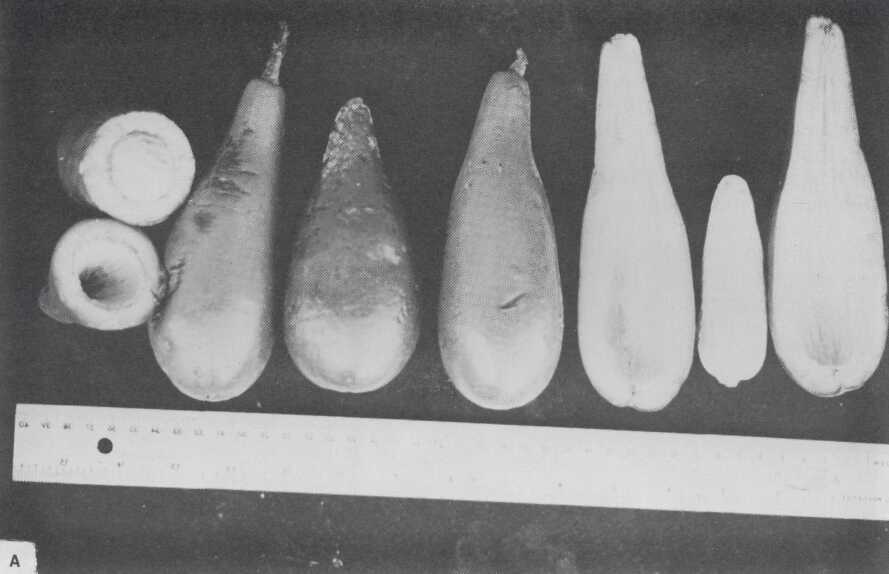
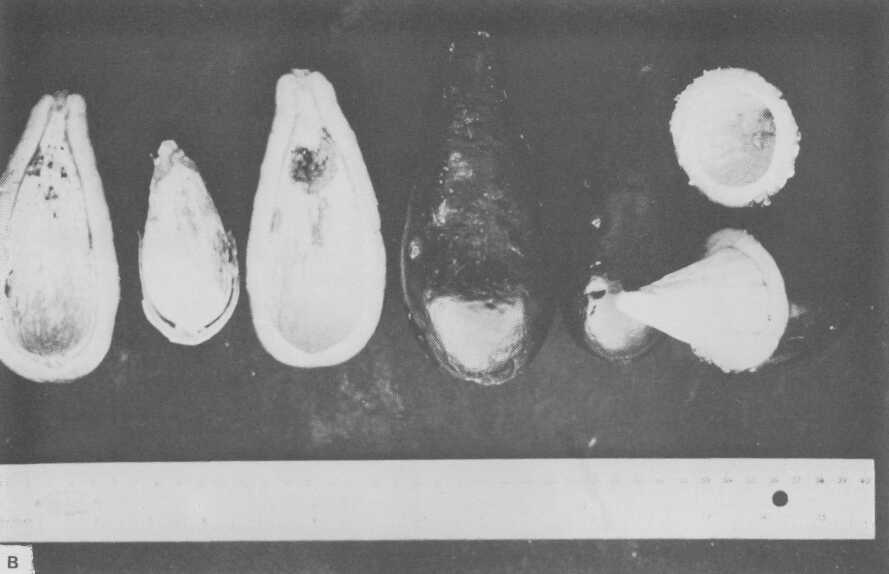
Fig. 1. Fruits of Beilschmiedia collected near Cuetzalan, Puebla. a) green type, b) black type.

Fig. 2. Avocado trees of the Guatemalan race growing under drought conditions near Tuxtla Gutierrez, Chiapas.
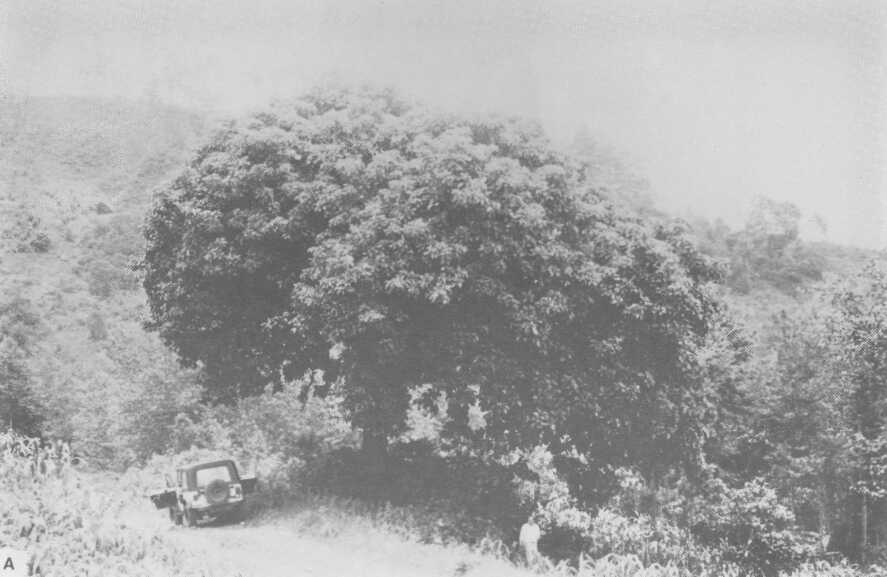

Fig. 3. a)
"Hib" tree (Persea schiedeana) growing near Chalam, Chiapas,
b) leaves of "chinini" and "Hib". (continued on next page).
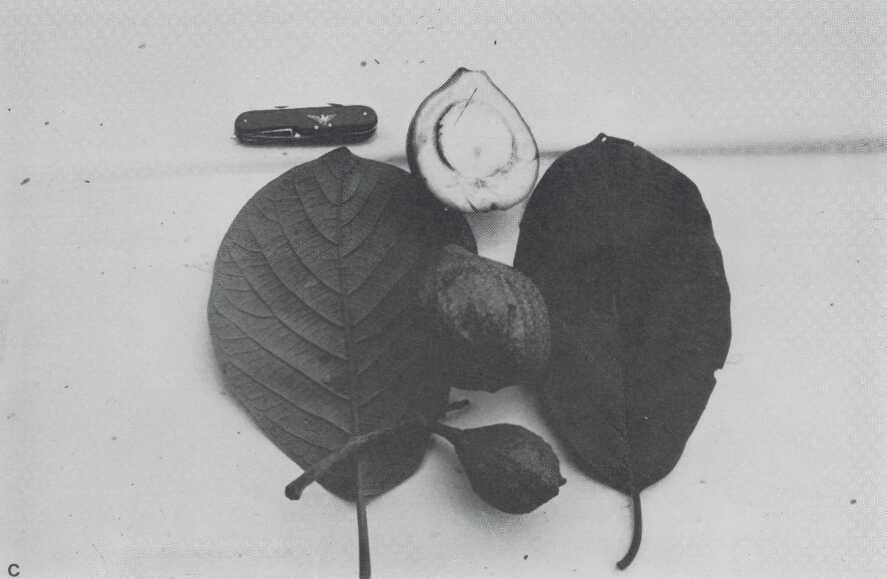
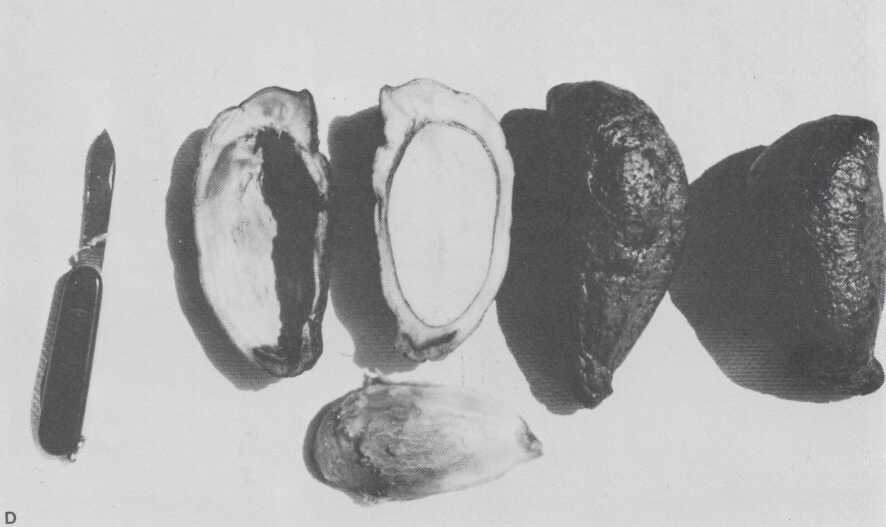
Fig. 3. c)
Fruits and leaves of "hib". d) Fruits of "chinini" (Persea
schiedeana).

Fig. 4. Persea steyermarkii growing near Tzontehuitz, Chiapas.